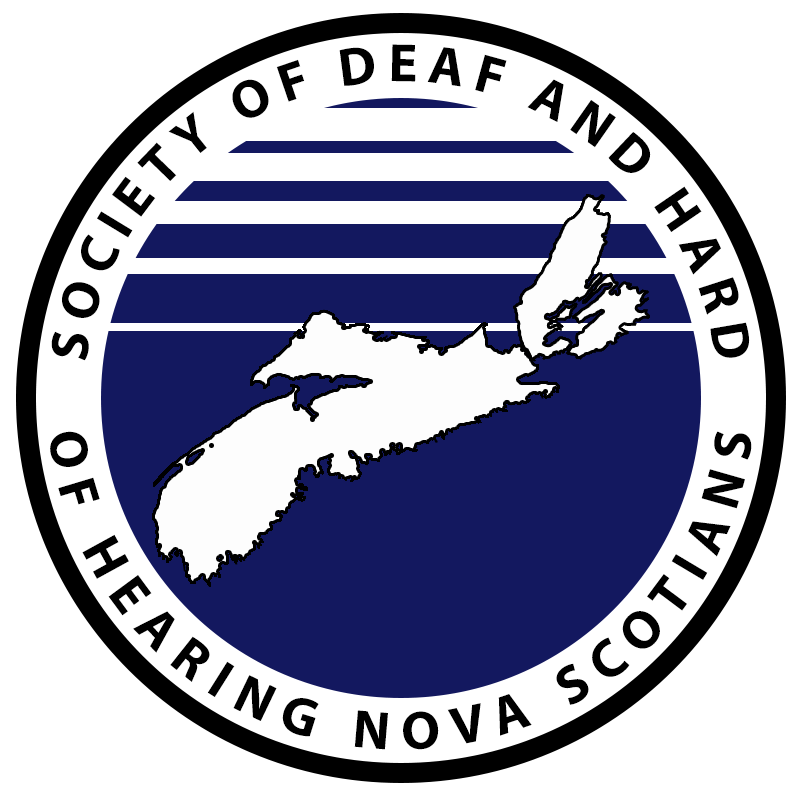There are over 150,000 Deaf, Deafened, and Hard of Hearing people in Nova Scotia. Hearing loss is second only to arthritis as the most common complaint of older adults, yet hearing loss is treatable and preventable. 90% of hearing loss can be treated with the use of hearing instruments. Only 16% of physicians routinely screen for hearing loss. (www.hearingloss.ca/hearing-loss-statistics-demographics/)
As reported by Statistics Canada, more than one million adults across the country reported having a hearing-related disability, a number more than 50% greater than the number of people reporting problems with their eyesight (StatsCan, 2002). Other studies indicate that the true number may reach three million or more Canadian adults as those suffering from hearing problems often underreport their condition.
Older adults with unmanaged hearing loss are at an increased risk of cognitive decline and developing Alzheimer’s disease and other forms of dementia. However, there is encouraging evidence that hearing assistance, such as a hearing aid, can improve the lives of even those with significant dementia.

- Research has revealed there is a greater risk of falling with hearing loss and the risk of falling increases with the severity of the hearing loss.
- One in five teenagers, aged 12 to 19 years, have some degree of hearing loss, according to a study by the American Medical Association from statistics from the NHANES 2005-2006 health survey. This represents a 30% increase over the preceding 10 years and is at least partly attributable to noise damage (Shargorodsky et al, 2010).
- Research shows that over the last 10 years, the percentage of second graders with hearing loss has increased by 280%, while hearing loss for eighth graders has increased by over 400% (Montgomery and Fujikawa, 1992).
- Exposure to noise of 85dB over time will harm your hearing. The following sounds will give you an idea of the loudness of 85dB: an electric razor, a noisy restaurant, and the telephone dial tone. Personal stereos played at a volume of 5 out of 10 registers at 100dB. Concerts, arcades, a power saw, or a leaf blower can hit levels of 110dB or more. Regular exposure at this level of more than 1 minute risks permanent hearing loss. Consider the following sounds: movie theatre – 117; stereos at max – 120; and noisy squeeze toys – 135. Some sounds are beyond the threshold of pain like a firecracker – 150; balloon pop – 157; fireworks – 162; and rifle shot – 163.
- The cost of hearing loss to the Canadian economy could be in the tens of billions of dollars. A 2006 Australian study estimated that costs to that nation’s economy from hearing loss amounted to CAD$10.6 billion per year. On a per-capita basis, this could mean a Canadian equivalent of almost $ 18 billion per year.
- Hearing loss exposure to loud noise can occur slowly and over time. Noise-induced hearing loss over time is painless, progressive, and permanent, BUT it is preventable. Learn how to protect your hearing.
- American Sign Language (ASL) is a language separate from English. It does not have word-for-word written translation; thereby note writing can be confusing and misleading for everyone. On the language spectrum, ASL is comparable with other spoken languages as it takes years to master, it has its own rules of grammar and syntax, it has cultural influences, and it is constantly evolving.
- Sign Language Interpreters are paid professionals. They should not be confused with people who “know some signs” or with friends or family members. For your protection, the Society does not recommend or support family and friends acting as “interpreters” for the Deaf. To become an interpreter, the person must be fluent in ASL and have a foundation and understanding of Deaf Culture. Like other professions, they will have graduated from a post-secondary discipline of training to learn the principles of managing interpretation, to increase proficiency building in ASL and Deaf Culture, to learn how to communicate and interact bilingually, and to learn the principles and adhere to professional standards. (Canada Association of Sign Language Interpreter’s Code of Ethics.)
- Society of Deaf and Hard of Hearing Nova Scotians – Cape Breton affiliate currently employs 2 American Sign Language Interpreters.
- MSI covers American Sign Language / English Interpreters for most medically related appointments.
- The Province of Nova Scotia has a contract with the Society to provide interpreter services to its Departments.
- In 2013, the Society partnered with the Canadian Hearing Society to sell Assistive Technologies.
- The Society offers a Hearing Aid Bank program to residents of Cape Breton in financial need and welcomes donations of “behind the ear” style hearing aids. Drop boxes for hearing aids are located at funeral homes in the greater CBRM area and at local libraries.
